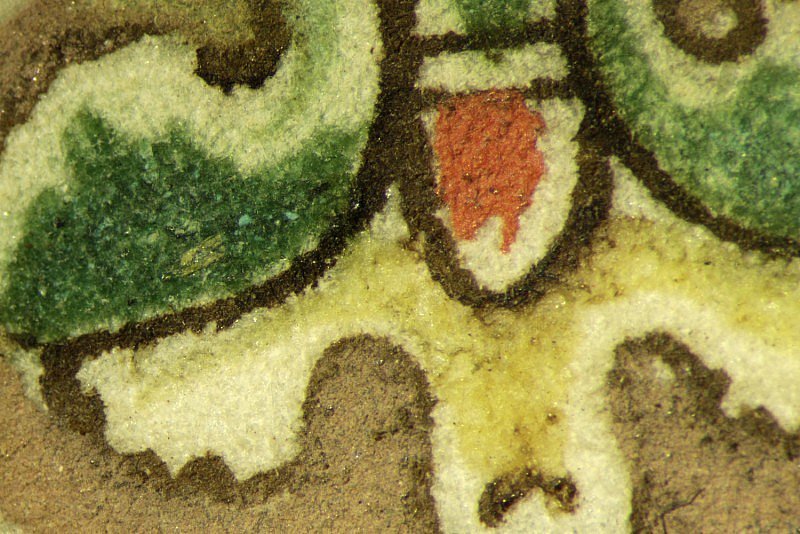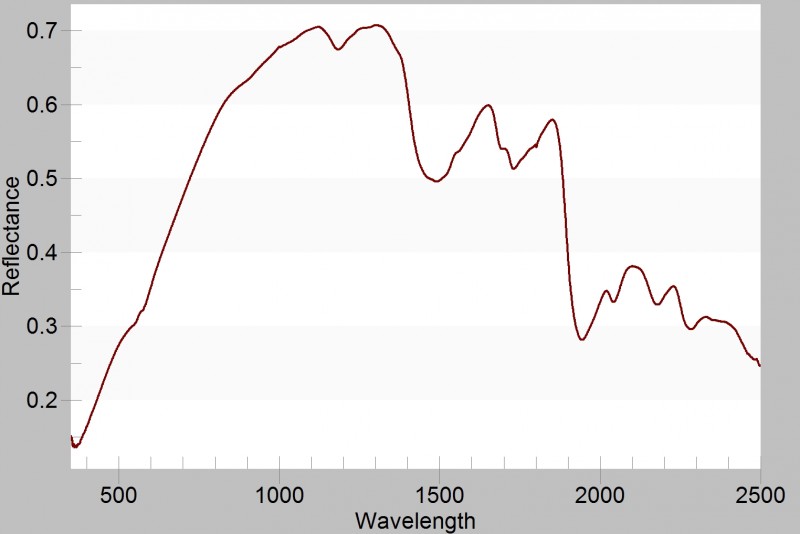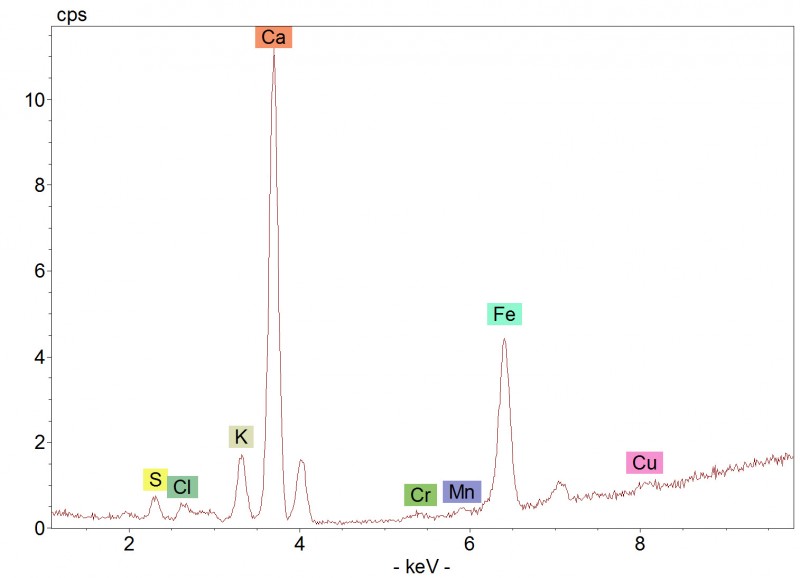The penwork initials
Artists' Materials
Two types of large penwork initials mark the major text divisions. The simplest ones, executed in ultramarine blue and vermilion red ink, are flourished and filled with scrolling patterns in the contrasting colour. The more ornate ones, also executed in ultramarine blue and vermilion red ink, are filled with foliate ornament in multicoloured washes with occasional touches of gold. Pigments identified in these initials include verdigris, an organic yellow and a tan-coloured mixture, which probably contains lead white, an organic dye and possibly small amounts of other pigments.



Red initial P filled with foliate ornament in multicoloured washes (Psalm 118)
The initial P, painted in vermilion, is filled with foliate ornament in verdigris green, vermilion red, an organic yellow and a tan-coloured mixture of lead white and an organic red (hotspots 1 and 2). Small amounts of other pigments may also be present as suggested by traces of iron, copper and mercury identified by XRF.
The thin penwork lines are traced in vermilion red, ultramarine blue and brown iron-gall ink (hotspot 3).